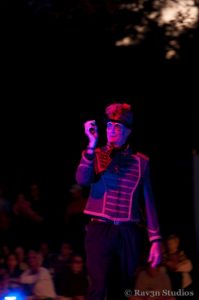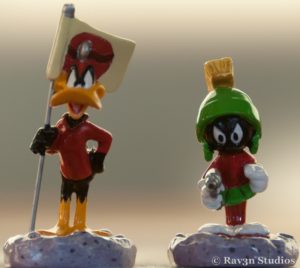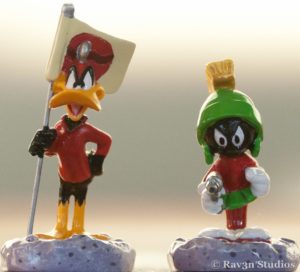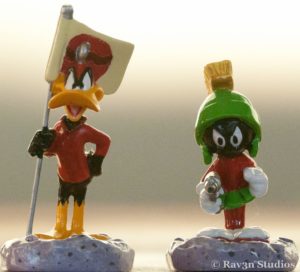We are finally onto the last, and hopefully easiest, part of the exposure triangle. By now, you have played with shutter speeds and fiddled with aperture settings. One last building block is still missing from all of this. That building block is your camera’s ISO setting.
ISO (or International Standards Organization) is how we control cameras sensitivity to light. This is the equivalent of film speed, but without the need to lug around six different rolls of film for shooting in various lighting conditions. I know that in prior articles I have used light and detail as interchangeable terms. For this article, light will stick to meaning brightness.
ISO has a wide range of values depending on your camera, what the manufacturer is capable of producing, and the demand for higher ISO settings. Common ISO numbers range from ISO 100 to ISO 6400, but these are just common settings and not the full gamut of ISO setting available on the market. What does this range have to do with you, and ultimately the exposure triangle? Well, quite a bit actually.
Let us say you set your camera to an ISO of 100. This is common for a fair amount of photographers when shooting in bright light, outdoors, and other brightly lit conditions. An ISO of 100 means your camera sensor is not super sensitive to light. Think of ISO 100 has having sunglasses on you camera sensor. It takes in light, but it is not sucking in copious amounts of light. Setting a low ISO means we can now use larger apertures, or slightly slower shutter speeds as we have the camera sensor set to a low light sensitivity.
An example for using a low ISO is shooting during the middle of the day while the sun is brightly shinning. There is so much light flooding your scene that you will want to take in detail before the light over exposes the scene. Setting an ISO of 100 makes it so the sensor does not become overwhelmed by light before the detail can take hold.
Example photo: This is shot in the late morning hours when the sun was bright. A low ISO allows for more detail to come through before the light causes over exposure:
 Shutter: 1/180
Shutter: 1/180
Aperture: f/11
ISO: 200
White Balance: Daylight Preset
Now, the reverse of this means that an ISO of 6400 is like staring into the sun wide-eyed and bushy tailed at high noon. High ISOs make the camera sensor very sensitive to light. You may use an ISO of 800, or greater, if you are shooting in dimly lit situations without a flash. Having a higher ISO allows for smaller apertures and faster shutter speeds in low lighting conditions.
An example of using a higher ISO would be shooting a candle lit dinner. You may set an ISO of 800 to allow the camera a great sensitivity to light so you can use a faster shutter speed to capture a split second of two people in a romantic embrace.
Example photo: Low lighting and no tripod means I had to up my ISO for shooting this photo. I also wanted a relatively faster shutter speed to reduce my shaking, along with cutting some of the blur from actor movement:
 Shutter: 1/15
Shutter: 1/15
Aperture: f/5.3
ISO: 800
White Balance: Cloudy Preset
You might be questioning why anyone would use a flash when a high ISO can be used to allow the camera to take in more light. While this maybe feasible, there is a rather big downside to high ISO settings. This downfall is noise in the resulting image taken at higher ISOs. Think of noise as TV static on your images. The higher the ISO setting, the more noise you get in the end photograph. Camera manufactures have been busy working on making these higher settings come with a lot less noise, but keep in mind that shooting at the high end of your camera’s ISO capabilities will end in noise on the photo.
ISO might be a simple number, but the impacts it can play on your photos is rather dramatic. Many photographers try to keep their ISO setting as low as possible so they do not have to clean up their photos in post processing. Your ISO setting will play in what you can use for both shutter speed and aperture.
Example Photos: Here are a few examples taken with ever increasing ISO setting. I left these just as they came out of the camera (minus a bit of cropping) so you can easily see how an ever-increasing ISO helps with the exposure in low lighting. Pay particular attention to the shutter and aperture settings as the ISO is kicked up. These are shot with a D90, which has a low ISO of 100 and a high ISO of 6400.
 Shutter: 1/50
Shutter: 1/50
Aperture: f/5.6
ISO: 100
White Balance: Auto
 Shutter: 1/50
Shutter: 1/50
Aperture: f/5.6
ISO: 200
White Balance: Auto
 Shutter: 1/100
Shutter: 1/100
Aperture: f/5.6
ISO: 400
White Balance: Auto
 Shutter: 1/200
Shutter: 1/200
Aperture: f/5.6
ISO: 800
White Balance: Auto
 Shutter: 1/320
Shutter: 1/320
Aperture: f/10
ISO: 3200
White Balance: Auto
 Shutter: 1/320
Shutter: 1/320
Aperture: f/16
ISO: 6400
White Balance: Auto
*The Current Photographer website contains links to our affiliate partners. Purchasing products and services through these links helps support our efforts to bring you the quality information you love and there’s no additional cost to you.
This is where you would expect me to tell you about my life, how awesome I am, or why I am so superior to other people in this line of business. I would enjoy telling you how I have wrestled grizzly bears 10 feet tall. Maybe you would like hearing how I have taken on Velociraptors in my days as a young man. Even better is the story how I have traveled to the furthest reaches of space to stop catastrophic alien invasions. The problem will be that you might not believe my awesome stories.
I will keep these awesome stories for the campfire though. I’m just a man, taking pictures, trying to make a living. I ditched my education in computers in favor of pursuing my passion for photography. I enjoy a good cold beer on a warm day. I have a fondness of the outdoors.. I have enjoyed years capturing life’s unscripted moments. Hopefully, I can enjoy many more years of slacking off without fear of those grizzlies taking me out before my time.
My Philosophy is to capture those non-scripted moments. To capture the little details that this world really has to offer. From weddings to insects, I enjoy capturing the life, the details, and the moments that come and go in a flash.
RT @TrevorCurrent: Photography 101: ISO With A Side Of Light. Learn about your camera’s sensitivity to light. https://currentphotographer.com/photograp… #p …
RT @TrevorCurrent: Photography 101: ISO With A Side Of Light. Learn about your camera’s sensitivity to light. https://currentphotographer.com/photograp… #p …
RT @TrevorCurrent: Photography 101: ISO With A Side Of Light. Learn about your camera’s sensitivity to light. https://currentphotographer.com/photograp… #p …
RT @TrevorCurrent: Photography 101: ISO With A Side Of Light. Learn about your camera’s sensitivity to light. https://currentphotographer.com/photograp… #p …
RT @TrevorCurrent: Photography 101: ISO With A Side Of Light. Learn about your camera’s sensitivity to light. https://currentphotographer.com/photograp… #p …
RT @TrevorCurrent: Photography 101: ISO With A Side Of Light. Learn about your camera’s sensitivity to light. https://currentphotographer.com/photograp… #p …
RT @TrevorCurrent: Photography 101: ISO With A Side Of Light. Learn about your camera’s sensitivity to light. https://currentphotographer.com/photograp… #p …
RT @TrevorCurrent: Photography 101: ISO With A Side Of Light. Learn about your camera’s sensitivity to light. https://currentphotographer.com/photograp… #p …
RT @TrevorCurrent: Photography 101: ISO With A Side Of Light. Learn about your camera’s sensitivity to light. https://currentphotographer.com/photograp… #p …
I enjoy very much using ISO… And also enjoy reading your passion over this!
Thanks for sharing, it has become very useful for me…